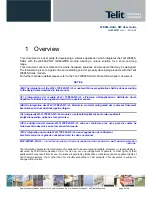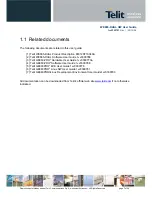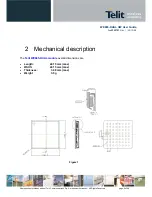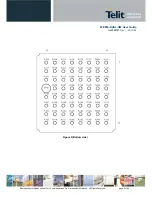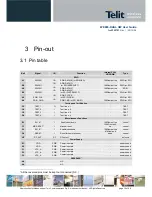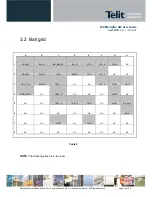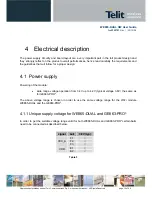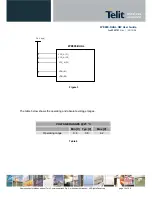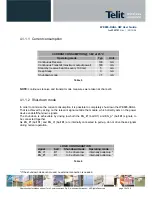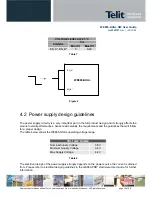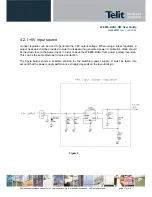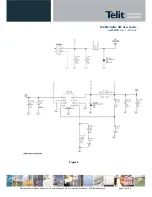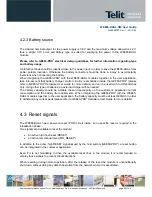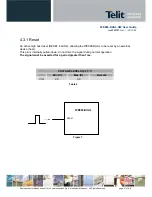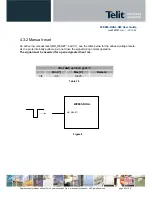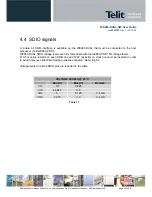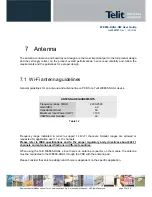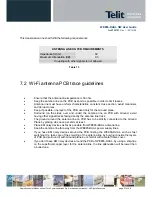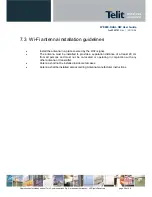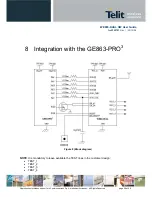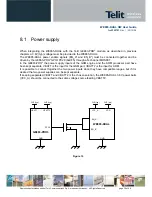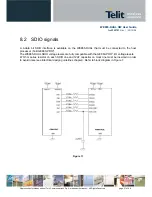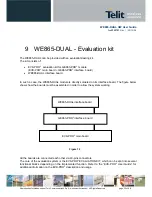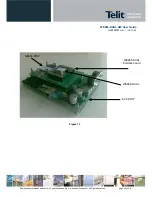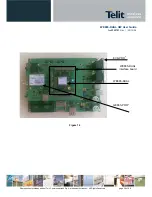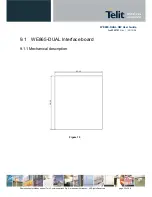
WE865-DUAL HW User Guide
1vv0300787
Rev. 1 - 03/10/08
Reproduction forbidden without Telit Communications S.p.A. written authorization - All Rights Reserved
page 20 of 48
4.2.3 Battery source
The desired nominal output for the power supply is 3.8V and the maximum voltage allowed is 4.2V,
thus a single 3.7V Li-Ion cell battery type is suited for supplying the power to the WE865-DUAL
module.
Please refer to GE863-PRO
3
electrical design guidelines for further information regarding type
and battery usage
.
A protection diode should be inserted close to the power input, in order to save the WE865-DUAL from
power polarity inversion. Otherwise the battery connector should be done in a way to avoid polarity
inversions when connecting the battery.
When integrating the GE863-PRO
3
with the WE865-DUAL modules together in the user application,
take into account that battery charger control circuitry is embedded inside the GE863-PRO
3
(please
refer to GE863-PRO
3
Hardware User Guide for more details) and can be used with Li-ION batteries
only. Using other type of batteries, an external charger will be needed.
The battery capacity should be suitable chosen dependently on the customer’s application current
consumption and the battery life requirements. When integrating the GE863-PRO
3
with the WE865-
DUAL modules together in the user application, the battery capacity must be at least 800mAh in order
to withstand any current peak (please refer to GE863-PRO
3
Hardware User Guide for more details).
4.3 Reset signals
The WE865-DUAL has a power-on-reset (POR) circuit inside, so no specific reset is required in the
initialization phase.
Two signals are available to reset the module:
•
an active high host reset (RESET)
•
an active low manual reset (MR_RESET*)
In addition to the active high RESET signal issued by the host system (GE863-PRO
3
), a reset button
can be integrated in the customer application.
Even if it is not mandatory to drive the available reset lines in the module, it is recommended to
employ those signals to prevent critical situations.
When resetting during normal operation, after the release of the reset the module is unconditionally
shut down, without doing any detach operation from the network where it is associated.

